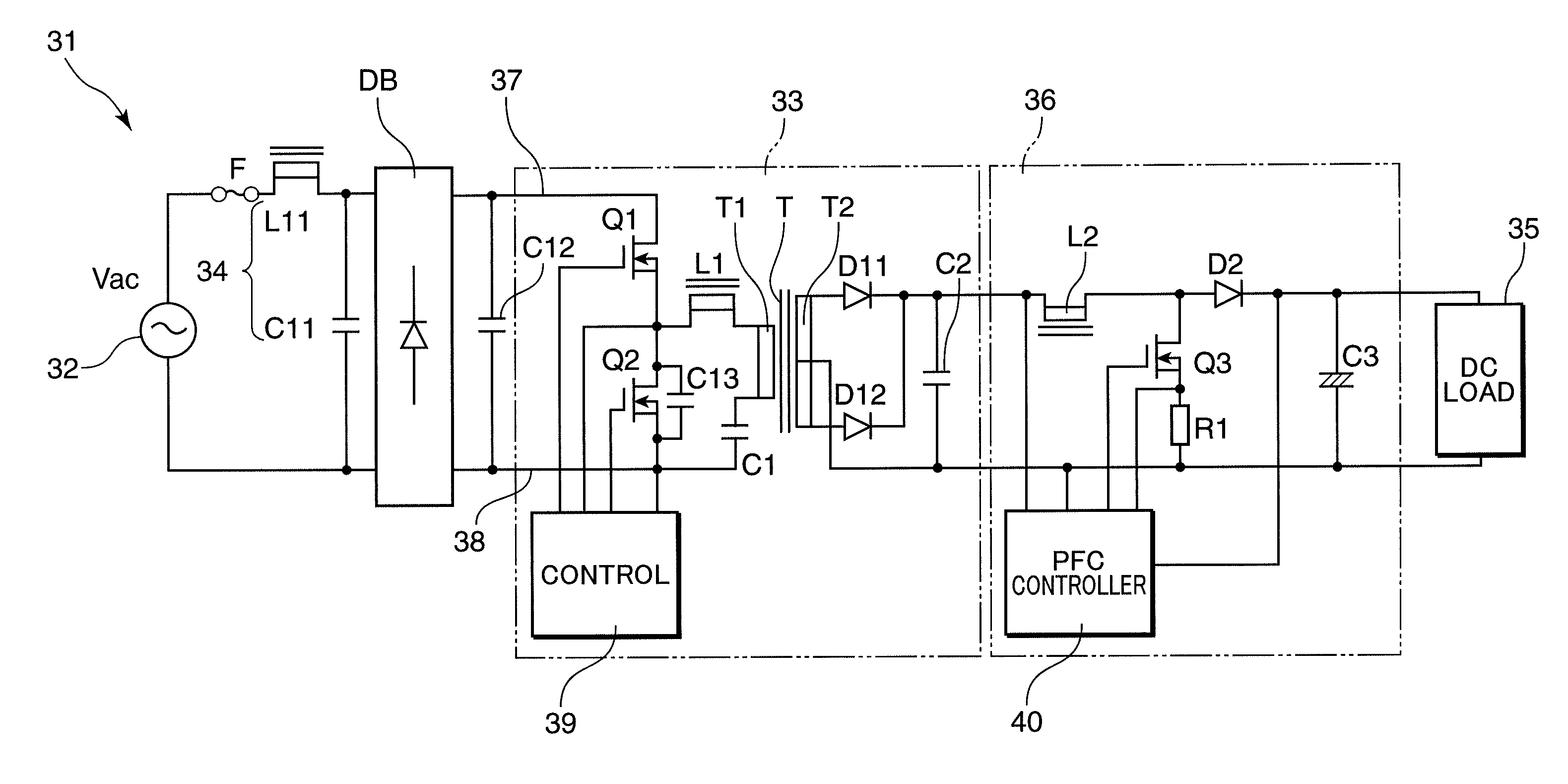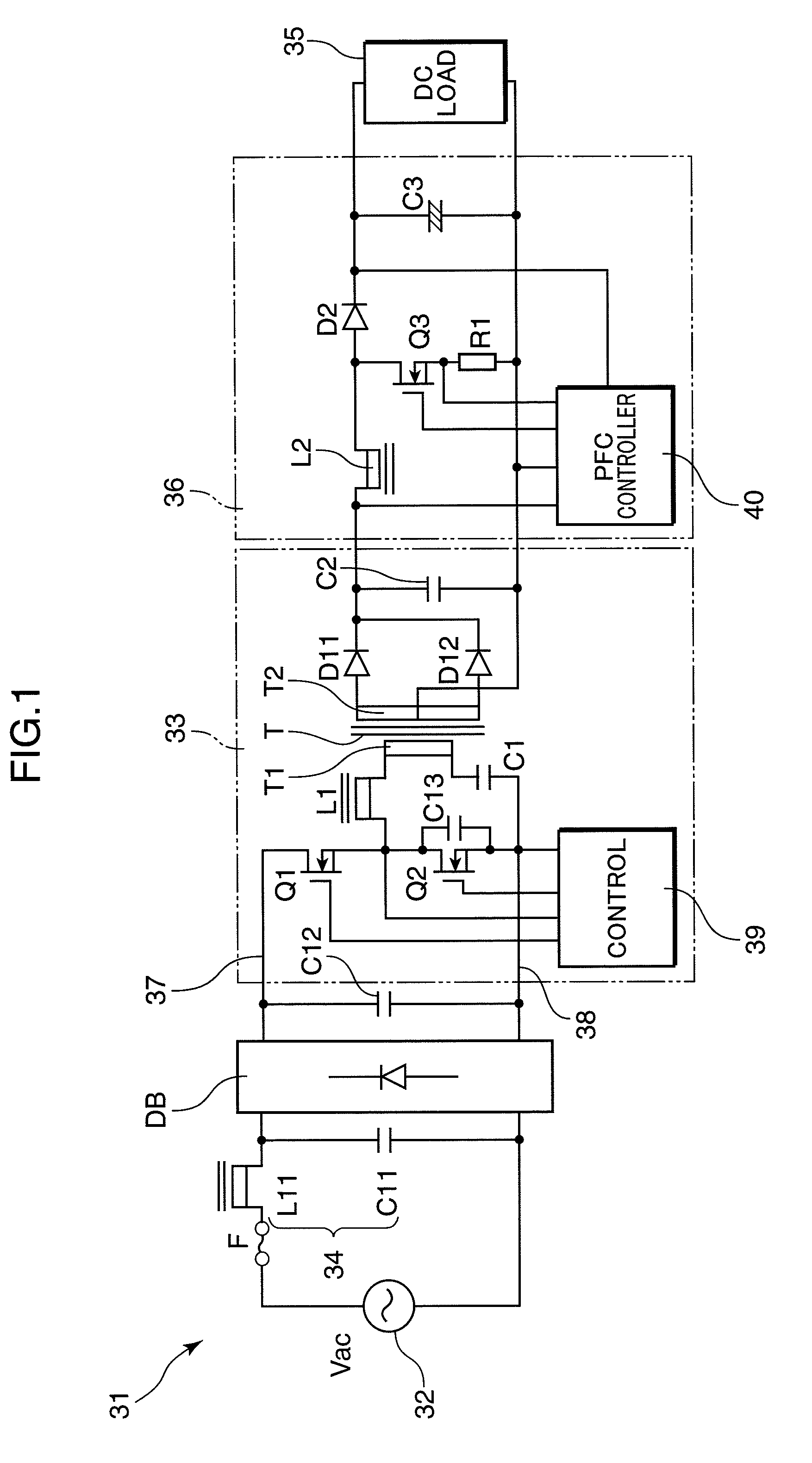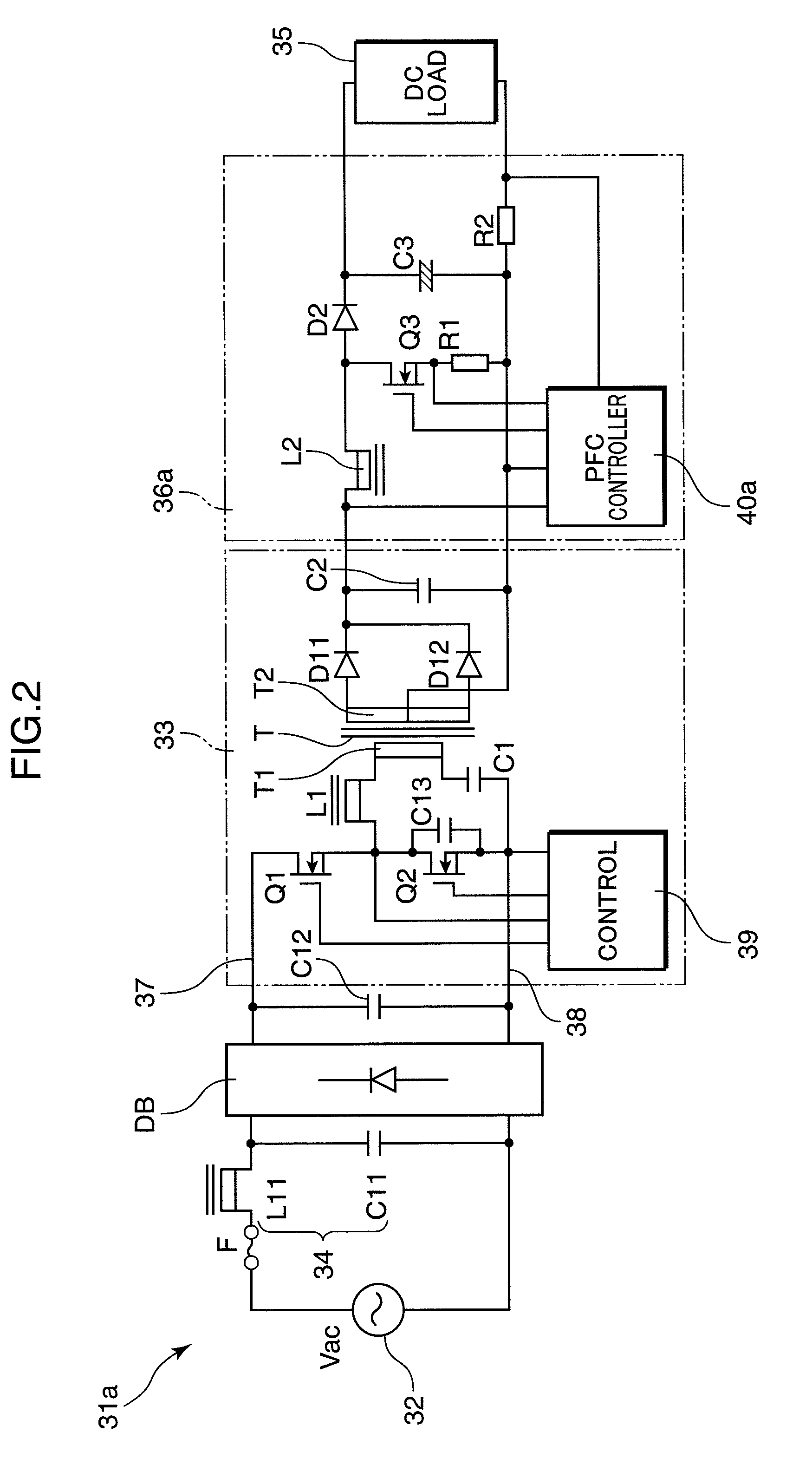Insulation type AC-DC converter and LED DC power supply device using the same
a technology of led dc power supply and ac-dc converter, which is applied in the direction of electric variable regulation, process and machine control, instruments, etc., can solve the problems of increasing circuit losses, and affecting the operation of circuits
- Summary
- Abstract
- Description
- Claims
- Application Information
AI Technical Summary
Benefits of technology
Problems solved by technology
Method used
Image
Examples
example 1
PRACTICAL EXAMPLE 1
[0041]FIG. 1 and FIG. 2 are block diagrams showing the electrical configurations of insulation type AC-DC converters 31 and 31a of a first aspect of the invention. The converter 31 is substantially configured comprising a diode bridge DB, which is full-wave rectifying means performing full-wave rectification of an input current from a commercial power supply 32; a multi-resonance type half-bridge DC-DC converter 33, which is a first converter, provided in the stage after the diode bridge DB, having an insulation transformer T; a filter circuit 34, provided between the commercial power supply 32 and the half-bridge DC-DC converter 33, which smoothes the input current comprising high-frequency components; and, a boosting chopper circuit 36, which is a second converter, provided in the stage after the half-bridge DC-DC converter 33, which provides a DC voltage stabilized at a desired voltage to a DC load 35, and is provided to improve the power factor.
[0042]The sinus...
example 2
PRACTICAL EXAMPLE 2
[0056]FIG. 6 is a block diagram showing the electrical configuration of the boosting chopper circuit 46 in the insulation type AC-DC converter of a second aspect of the invention. In this AC-DC converter, the configuration other than the boosting chopper circuit 46 is similar to that of the AC-DC converters 31 and 31a of FIG. 1 and FIG. 2 described above, and an explanation is omitted. The boosting chopper circuit 46 is similar to the above-described boosting chopper circuit 36, and the same reference symbols are assigned to corresponding portions, explanations of which are omitted. It should be noted that in this boosting chopper circuit 46, the second choke coil L2 comprises the primary winding T101 of the transformer T10, and the voltage induced in the auxiliary winding T102 thereof is input to the control circuit 50. Also, the control circuit 50 detects the current I101 flowing in the primary winding T101 which are the second choke coil, and when the current I...
example 3
PRACTICAL EXAMPLE 3
[0059]FIG. 8 is a block diagram showing the electrical configuration of the half-bridge DC-DC converter 53 in the insulation type AC-DC converter of a third aspect of the invention. In this AC-DC converter, the configuration other than the DC-DC converter 53 is the same as in the AC-DC converters 31 and 31a of FIG. 1 and FIG. 2 above, and explanations are omitted. The DC-DC converter 53 is similar to the above-described DC-DC converter 33, and the same reference symbols are assigned to corresponding portions, with explanations thereof omitted. It should be noted that in this DC-DC converter 53, the first choke coil L1 and insulation transformer T are formed by a single leakage transformer T′.
[0060]That is, by reducing the coupling between winding of the above-described insulation transformer T to generate leakage inductance, when forming the series resonance circuit, the primary winding T1′ of the leakage transformer T′ can also be made to function as the first ch...
PUM
 Login to View More
Login to View More Abstract
Description
Claims
Application Information
 Login to View More
Login to View More - R&D
- Intellectual Property
- Life Sciences
- Materials
- Tech Scout
- Unparalleled Data Quality
- Higher Quality Content
- 60% Fewer Hallucinations
Browse by: Latest US Patents, China's latest patents, Technical Efficacy Thesaurus, Application Domain, Technology Topic, Popular Technical Reports.
© 2025 PatSnap. All rights reserved.Legal|Privacy policy|Modern Slavery Act Transparency Statement|Sitemap|About US| Contact US: help@patsnap.com



